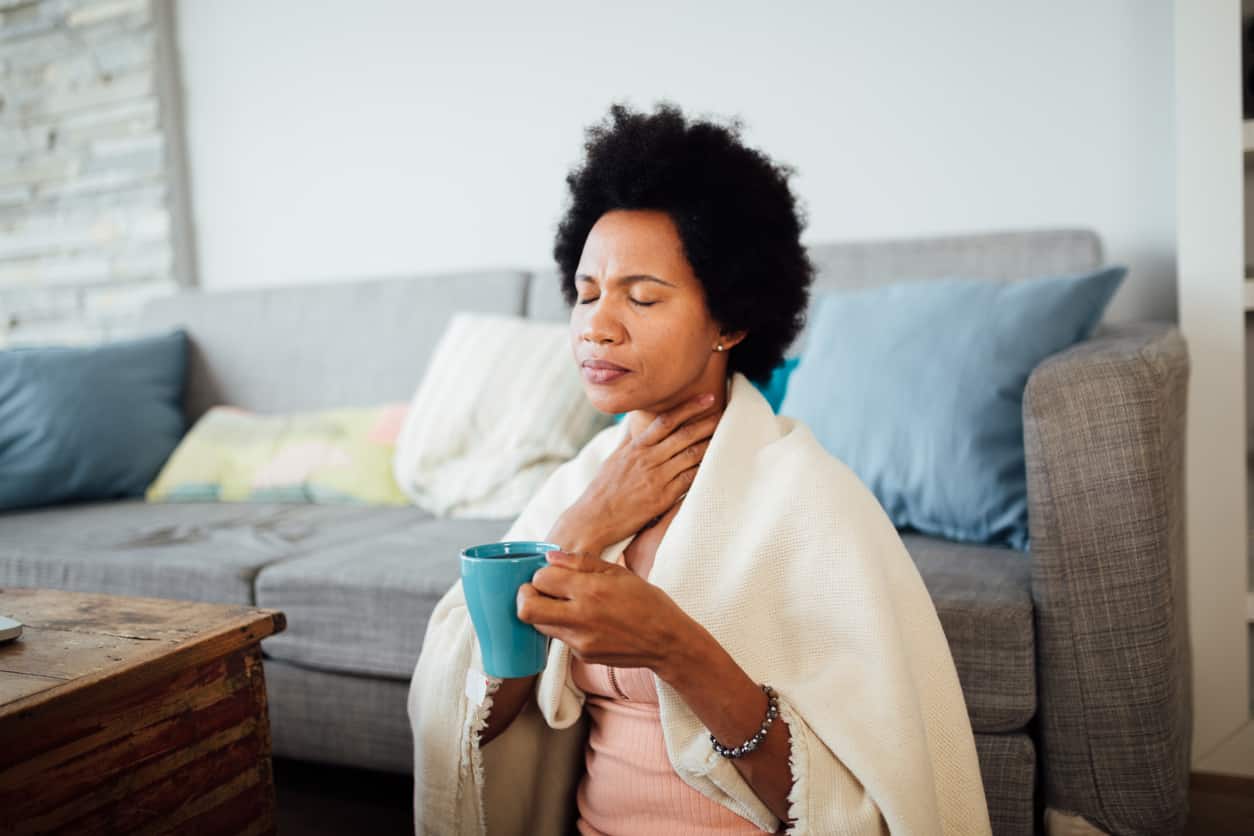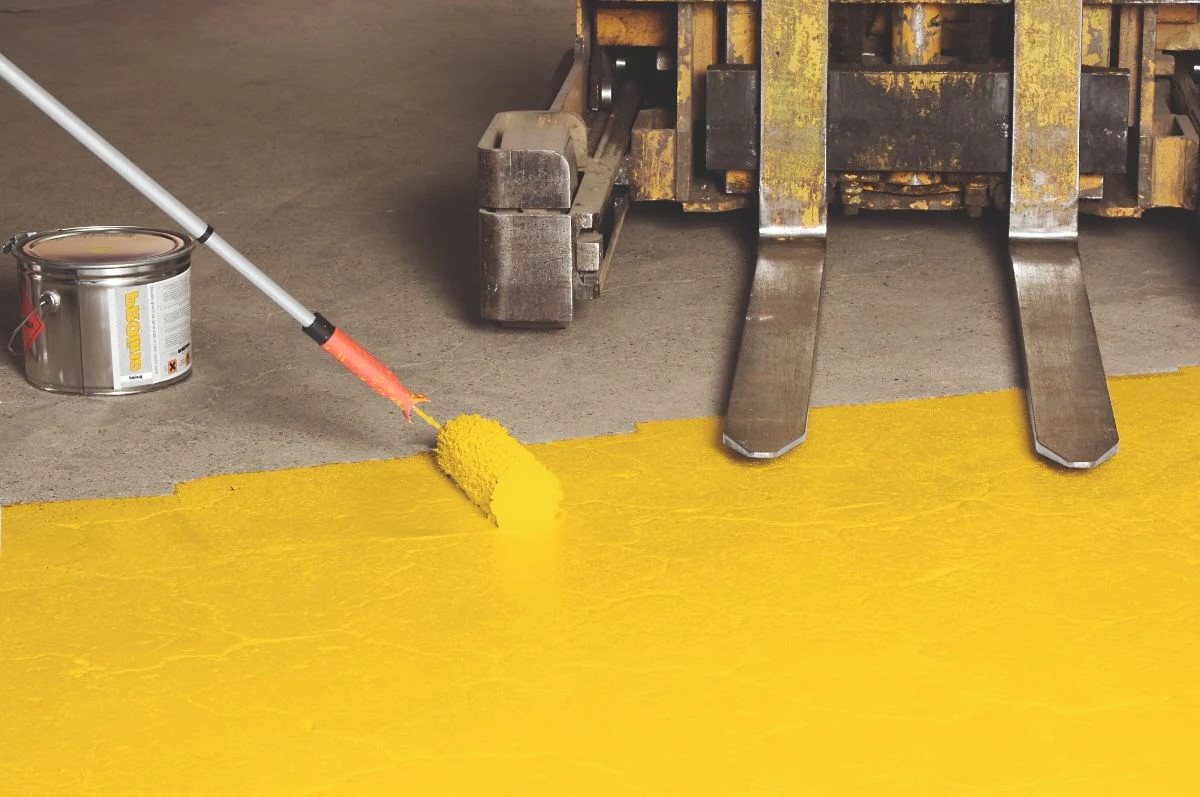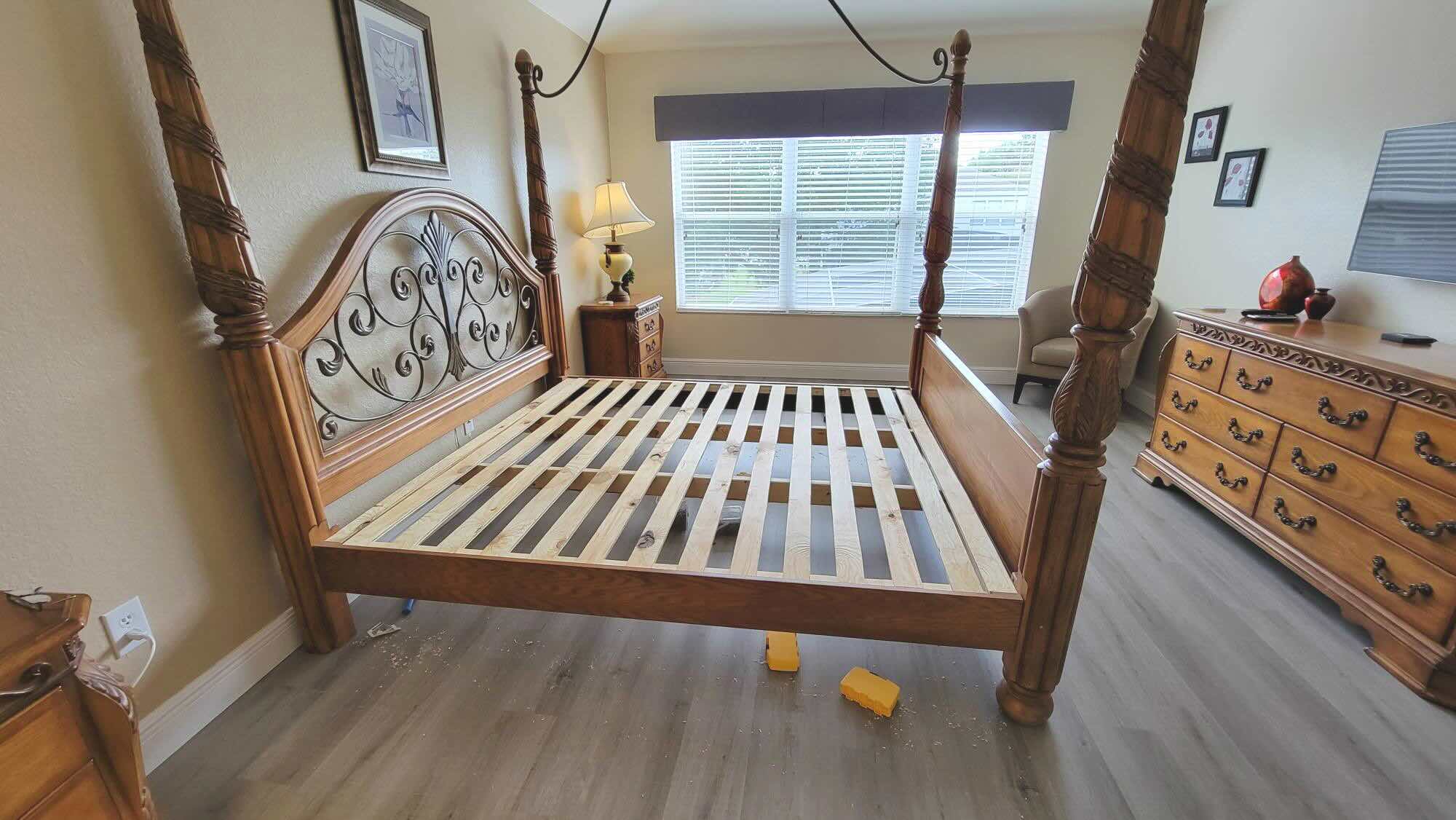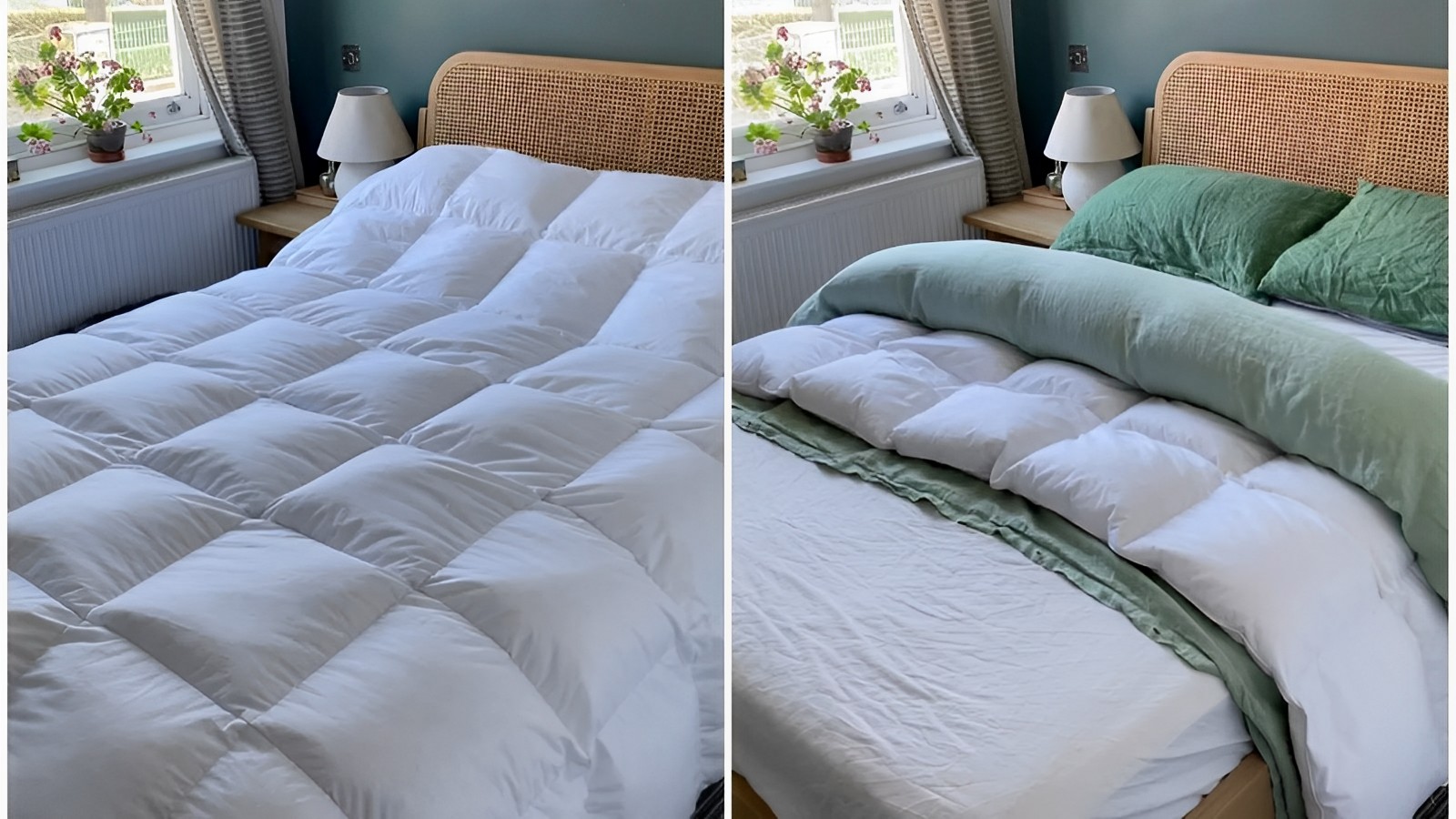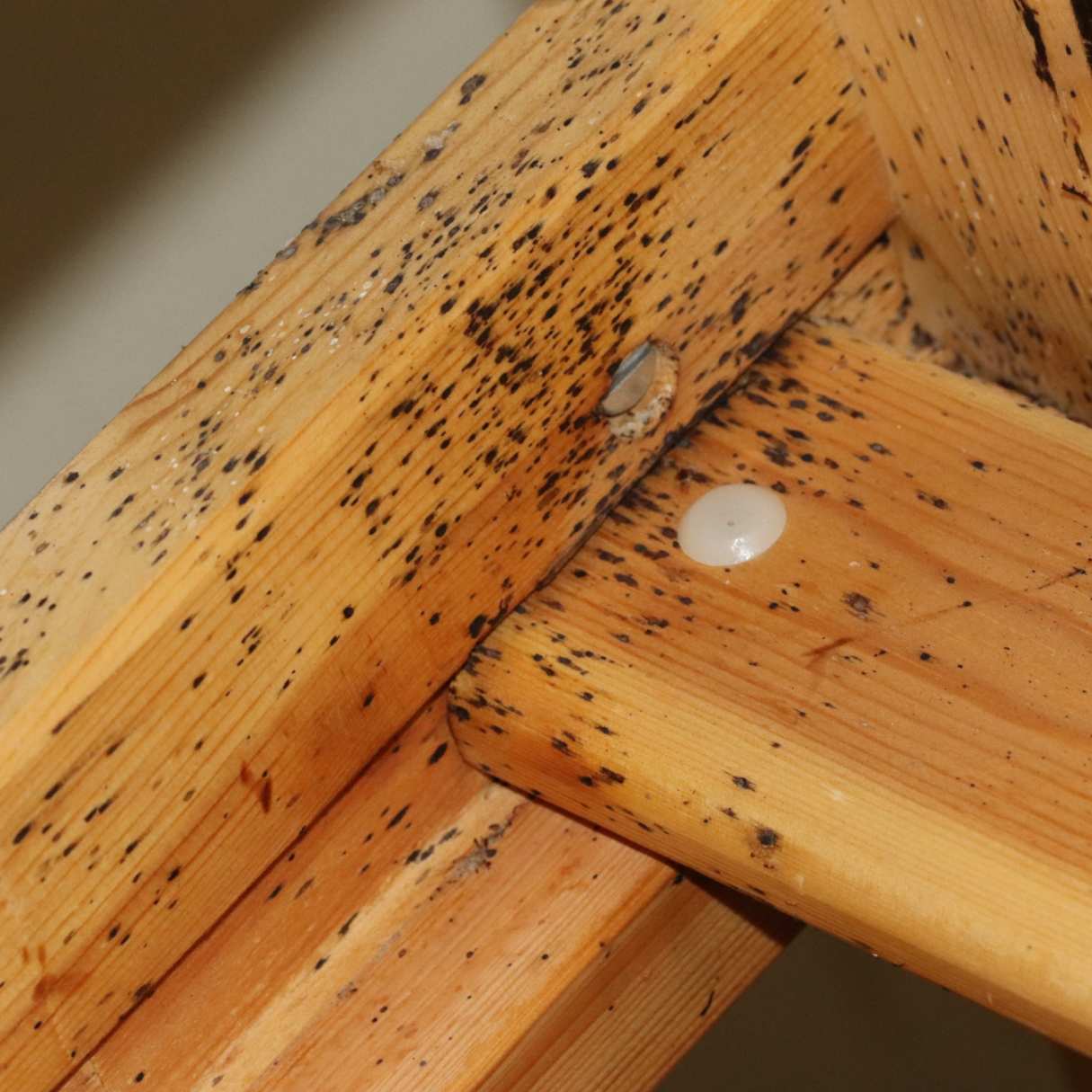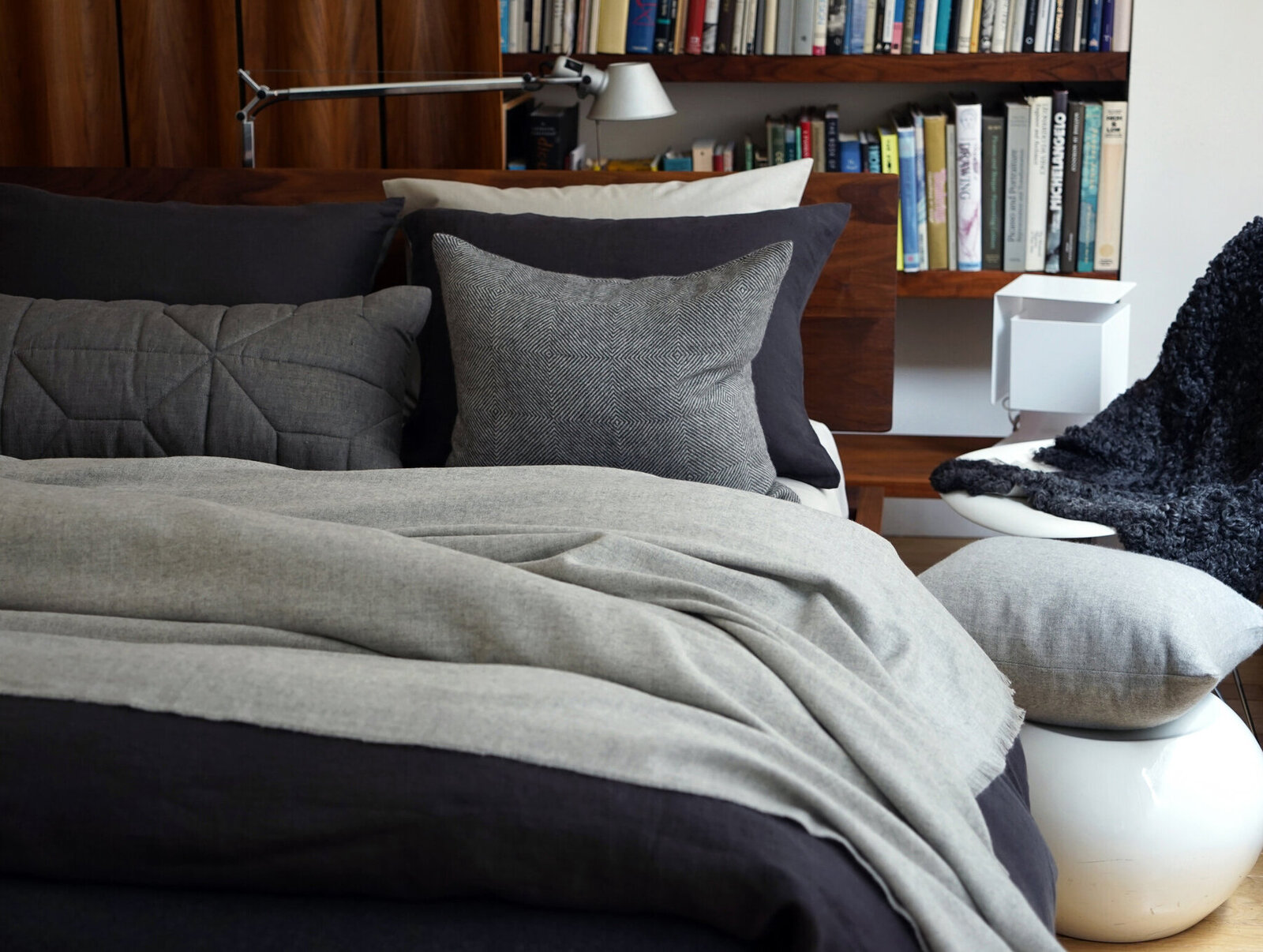Home>Furniture>Bedroom Furniture>How To Heal Bed Sores
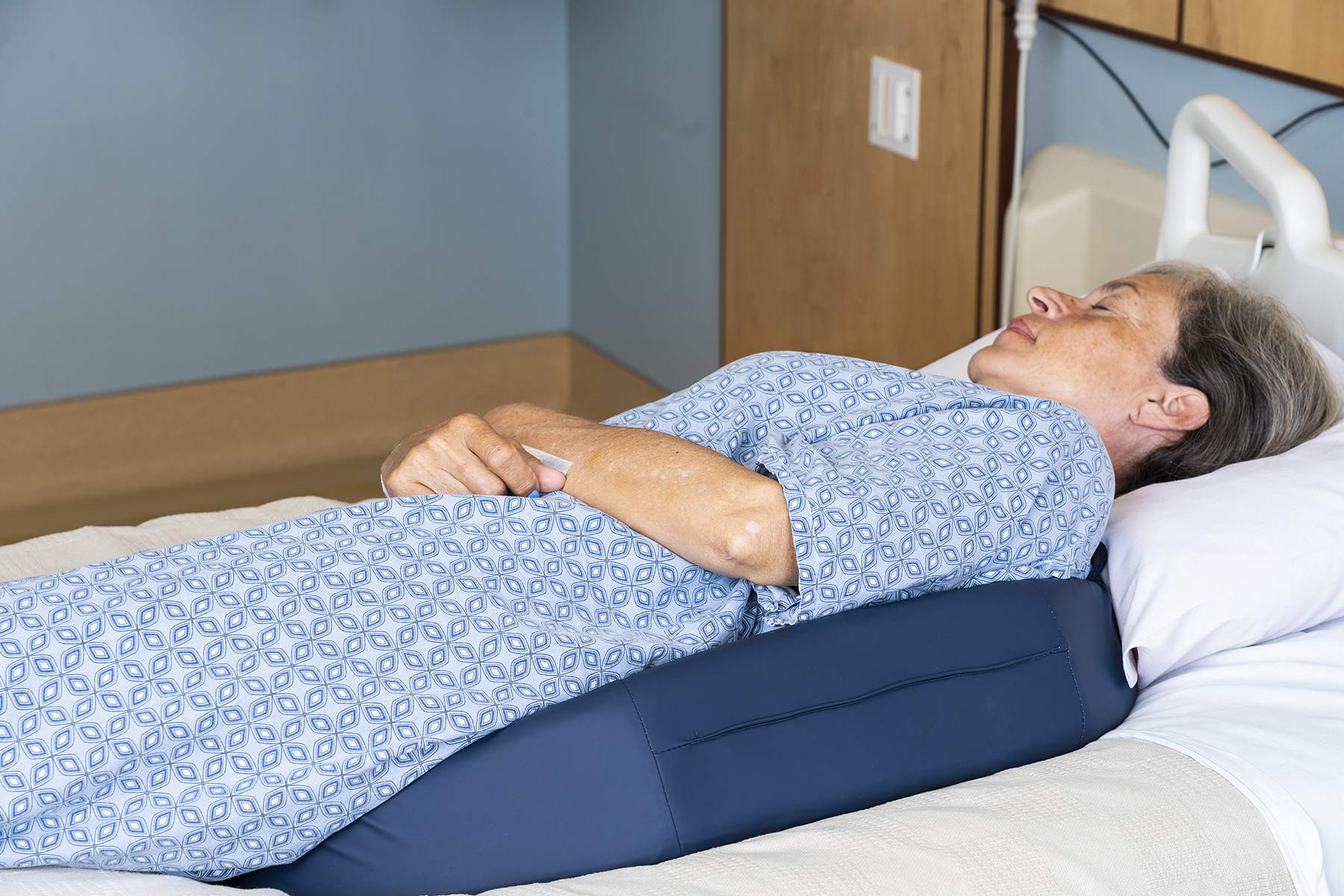

Bedroom Furniture
How To Heal Bed Sores
Modified: March 6, 2024
Learn how to heal bed sores effectively with our comprehensive guide. Discover the best bedroom furniture solutions for preventing and treating bed sores.
(Many of the links in this article redirect to a specific reviewed product. Your purchase of these products through affiliate links helps to generate commission for Storables.com, at no extra cost. Learn more)
Introduction
When it comes to bedroom furniture, comfort and relaxation are of utmost importance. Your bedroom should be a sanctuary, a place where you can retreat after a long day and rest peacefully. However, sometimes individuals may develop bed sores, also known as pressure ulcers, which can greatly impact their comfort and overall well-being.
Bed sores are areas of damaged skin and underlying tissue that develop when constant pressure is applied to a specific area of the body. They typically occur in individuals who are bedridden or have limited mobility, making them particularly prevalent among the elderly, hospitalized patients, and those with medical conditions that restrict movement.
In this article, we will explore the causes, risk factors, signs and symptoms, as well as prevention and treatment options for bed sores. Additionally, we will discuss alternative therapies and when it is crucial to seek medical help for this condition. By understanding the importance of preventing and treating bed sores, you can ensure the health and comfort of yourself or your loved ones.
Key Takeaways:
- Preventing bed sores involves regular repositioning, good nutrition, and proper hygiene. Early detection and seeking medical help when needed are crucial for effective treatment and healing.
- Alternative therapies like herbal remedies and acupuncture can complement medical treatments for bed sores, but it’s important to consult healthcare professionals before trying them.
Read more: How To Avoid Bed Sores
What are bed sores?
Bed sores, also known as pressure ulcers or decubitus ulcers, are areas of damaged skin and underlying tissue that develop due to prolonged pressure on certain parts of the body. These pressure ulcers can vary in severity, ranging from mild skin discoloration to deep, open wounds that extend into the muscles and bones.
Bed sores typically develop in areas where the bones are close to the skin, such as the heels, hips, tailbone, and elbows. The constant pressure on these areas restricts blood flow to the skin, leading to tissue damage and the formation of bed sores. Friction and shear forces can further contribute to the development and progression of these ulcers.
There are four stages of bed sores, each indicating a different level of severity:
- Stage 1: The skin shows non-blanchable redness, which means the skin appears red but does not turn white when pressed. The affected area may feel warm or tender to the touch.
- Stage 2: The skin breaks open or forms an ulcer, resembling a shallow open wound or blister. The surrounding area may appear pink or red.
- Stage 3: The ulcer extends deeper into the skin, reaching the underlying fat tissue. It may appear as a crater-like wound with a yellowish or necrotic base.
- Stage 4: The ulcer reaches the muscle, tendon, or bone. The wound may be deep and show signs of infection, with exposed muscle or bone visible.
Bed sores can be painful and susceptible to infection, particularly in advanced stages. Prompt and appropriate treatment is essential to prevent complications and facilitate healing.
Causes of bed sores
Bed sores develop primarily due to prolonged pressure on specific areas of the body, but there are several underlying causes and contributing factors that increase the risk of developing this condition. Understanding these causes can help in prevention and treatment strategies.
The primary cause of bed sores is pressure. When a person remains in one position for an extended period of time, such as when lying in bed or sitting in a wheelchair, pressure builds on certain areas of the body. This pressure reduces blood flow to the skin and underlying tissues, leading to tissue damage and the formation of bed sores.
Friction and shear forces also play a role in the development of bed sores. Friction occurs when the skin rubs against another surface, such as the bed sheets or clothing, leading to skin irritation. Shear forces occur when the skin moves in one direction while the underlying tissue moves in another. This can happen when a person slides down in bed or when a wheelchair is not properly positioned, causing the skin to stretch and tear.
Other factors that contribute to the development of bed sores include:
- Immobility: People who are bedridden or have limited mobility are at a higher risk of developing bed sores. Without regular movement, pressure on certain areas of the body remains constant, increasing the risk of tissue damage.
- Poor nutrition: A lack of proper nutrition can weaken the skin and make it more susceptible to damage. Malnourished individuals have a higher risk of developing bed sores.
- Dehydration: When the body lacks proper hydration, the skin becomes dry and more prone to damage. Adequate hydration is essential for maintaining skin health.
- Medical conditions: Certain medical conditions, such as diabetes, vascular disease, and neurological disorders, can impair blood flow, making the skin more susceptible to tissue damage.
- Smoking: Smoking reduces blood flow and impairs wound healing, increasing the risk of developing and worsening bed sores.
It is important to address these underlying causes and risk factors to prevent the development of bed sores. Taking proactive measures and implementing prevention strategies can significantly reduce the risk of this condition.
Risk factors for developing bed sores
While anyone can develop bed sores under the right circumstances, certain individuals are more vulnerable due to specific risk factors. Understanding these risk factors can help identify those who are at a higher risk of developing bed sores and enable appropriate preventive measures to be taken.
Here are some common risk factors for developing bed sores:
- Immobility: People who have limited mobility or are completely immobile are at a higher risk of developing bed sores. This includes individuals who are bedridden, confined to a wheelchair, or have difficulty changing positions on their own.
- Age: Older adults are more susceptible to bed sores due to factors such as thinning skin, reduced subcutaneous fat, and decreased blood circulation.
- Health conditions: Certain health conditions increase the risk of developing bed sores. These include diabetes, vascular disease, neurological disorders, spinal cord injuries, and conditions that affect blood circulation.
- Sensory impairment: Individuals who have a loss of sensation or impaired ability to feel pain may be unaware of the pressure on their body, increasing the risk of developing bed sores.
- Incontinence: Continuous exposure to moisture from urinary or fecal incontinence can weaken the skin, making it more susceptible to damage and the formation of bed sores.
- Malnutrition: Poor nutrition can weaken the skin and impair the body’s ability to repair tissue damage, increasing the risk of developing bed sores.
- Smoking: Smoking reduces blood flow and impairs wound healing, making smokers more prone to developing and worsening bed sores.
It is important to be aware of these risk factors and take appropriate preventive measures to minimize the risk of developing bed sores. Regular repositioning, maintaining proper hygiene, providing adequate nutrition, and ensuring a comfortable and pressure-relieving bedding surface are essential in preventing the formation of bed sores.
Furthermore, caregivers and healthcare professionals should be vigilant in assessing individuals who have these risk factors and implementing preventive strategies to protect their skin health effectively.
Signs and symptoms of bed sores
Bed sores, also known as pressure ulcers, can cause a range of signs and symptoms that vary depending on the stage of the ulcer. It is important to recognize these signs early to prevent the progression of the condition and minimize complications.
Here are the common signs and symptoms of bed sores:
- Stage 1: In this early stage, the affected area may appear red and feel warmer or cooler than the surrounding skin. The skin may also feel tender or itchy. In individuals with darker skin tones, the area may appear to have a darker shade of skin.
- Stage 2: At this stage, the skin may break open or develop a blister-like wound. The area may be painful and exhibit an open sore or a shallow ulceration. There may be redness and swelling around the wound.
- Stage 3: In this advanced stage, the ulcer extends deeper into the skin, reaching the underlying fat tissue. The wound may appear as a crater-like sore with a necrotic base. The surrounding skin may show signs of skin breakdown and there may be pus or drainage present.
- Stage 4: At this severe stage, the ulcer reaches the muscles, tendons, or bones. The wound may be deep and have a large open cavity. The surrounding tissue may show signs of infection, such as redness, warmth, and foul-smelling discharge. Exposed muscle or bone may be visible.
Other signs and symptoms of bed sores include:
- Pain or discomfort: Bed sores can cause localized pain or discomfort, particularly as they progress to more severe stages. Pain may worsen with movement or pressure on the affected area.
- Changes in skin texture: The skin around the bed sore may feel different from surrounding areas. It may be unusually warm or cool to the touch, and the texture may be fragile, thickened, or scaly.
- Foul odor: As bed sores progress, they can emit an unpleasant odor due to infection and the breakdown of tissue.
- Changes in skin color: The skin around the ulcer may appear discolored. It may be red, purple, brown, or black, depending on the severity of the bed sore and the individual’s skin tone.
If you notice any of these signs or symptoms, it is crucial to seek medical attention. Early intervention can help prevent further complications and promote healing. Healthcare professionals can assess the condition and provide appropriate treatment and management strategies to address the bed sores effectively.
Prevention of bed sores
Preventing bed sores, also known as pressure ulcers, is crucial for maintaining the health and well-being of individuals who are at risk. By implementing proactive measures and preventive strategies, you can reduce the occurrence of bed sores and promote overall skin health. Here are some effective prevention strategies:
- Regular repositioning: Change the individual’s position frequently, at least every two hours, to relieve pressure on specific areas of the body. Use pillows, cushions, or specialized support surfaces to distribute pressure evenly.
- Optimize nutrition: Ensure the individual receives a balanced diet with adequate protein, vitamins, and minerals to support skin health and healing. Consult a healthcare professional or a registered dietitian for personalized nutritional advice.
- Maintain good hygiene: Keep the skin clean and dry to minimize the risk of infection. Regularly clean the individual’s skin with mild soap and water, patting it dry gently. Avoid harsh or irritating cleansers.
- Use appropriate skin care products: Apply moisturizers to keep the skin hydrated and prevent dryness. Use barrier creams to protect the skin from moisture or friction, especially in areas prone to bed sores.
- Provide proper bedding: Ensure the individual has a comfortable and supportive bedding surface. Use pressure-reducing mattresses, overlays, or cushions that distribute pressure evenly and reduce friction and shear forces.
- Encourage physical activity: Promote regular movement and exercise, within the individual’s capabilities, to improve circulation and prevent prolonged pressure on any one area. Consult a healthcare professional for appropriate exercises.
- Manage incontinence: Maintain good hygiene and promptly address urinary or fecal incontinence to prevent moisture-related damage to the skin. Use absorbent products and change them frequently.
- Quit smoking: If the individual is a smoker, encourage them to quit smoking. Smoking impairs blood circulation and slows down wound healing, increasing the risk of developing and worsening bed sores.
- Education and awareness: Educate the individual, caregivers, and healthcare professionals on the importance of early detection, prevention, and proper management of bed sores. Foster a collaborative approach to minimize the risk and impact of this condition.
By implementing these preventive strategies, you can significantly reduce the risk of developing bed sores. However, it is important to remember that each individual’s circumstances are unique. Consulting with healthcare professionals who can provide personalized recommendations based on the individual’s condition is vital for effective prevention.
Treatment options for bed sores
When bed sores, also known as pressure ulcers, occur, prompt and appropriate treatment is crucial to prevent complications and promote healing. The treatment approach may vary depending on the severity of the ulcer and the individual’s overall health. Here are some common treatment options for bed sores:
- Pressure relief: The first step in treating bed sores is to relieve the pressure on the affected area. This can be achieved by repositioning the individual regularly, using specialized support surfaces, cushions, or mattresses that distribute pressure evenly.
- Wound cleaning: Clean the wound with a gentle, mild cleanser and sterile saline solution to remove debris and bacteria. Avoid using harsh or irritating cleansers that can further damage the skin.
- Wound dressing: Apply appropriate dressings to promote healing and protect the wound from further damage. Dressings may include hydrocolloids, foams, films, or gauzes, depending on the characteristics of the ulcer.
- Debridement: In some cases, debridement may be necessary to remove dead or infected tissue from the wound. This can be done through various methods, such as surgical debridement, mechanical debridement, enzymatic debridement, or autolytic debridement.
- Antibiotics: If the ulcer is infected, antibiotics may be prescribed to treat the infection. This is determined by the healthcare professional based on the signs of infection, such as redness, warmth, swelling, or discharge.
- Negative pressure wound therapy (NPWT): NPWT involves applying a vacuum dressing to the wound, which helps to remove excess fluid, reduce swelling, and promote healing.
- Advanced wound care: In more severe cases, advanced wound care techniques or therapies, such as skin grafts, tissue flaps, or bioengineered skin substitutes, may be considered to facilitate healing.
- Pain management: Pain associated with bed sores can be managed using various methods, including over-the-counter pain medications, topical analgesics, or prescribed pain medications. Consult a healthcare professional for proper pain management strategies.
- Nutritional support: Adequate nutrition is crucial for wound healing. A registered dietitian may assess the individual’s nutritional status and recommend a diet high in protein, vitamins, and minerals to support healing and tissue repair.
Individualized treatment plans should be developed in collaboration with healthcare professionals who can assess the specific needs of the individual and provide appropriate interventions. Regular monitoring and follow-up are essential to track the progress of healing and make adjustments to the treatment plan as needed.
To heal bed sores, it’s important to keep the affected area clean and dry, change positions frequently, use special cushions or mattresses, and eat a healthy diet with enough protein and vitamins.
How to clean and dress bed sores
Effective cleaning and dressing of bed sores, also known as pressure ulcers, is essential for promoting healing and preventing infection. Here are some steps to properly clean and dress a bed sore:
- Gather necessary supplies: Before starting the cleaning and dressing process, gather the required supplies, including gloves, sterile saline solution, mild cleanser, sterile gauze or dressings, and an appropriate adhesive or bandage.
- Wash your hands: Thoroughly wash your hands with soap and water, or use hand sanitizer, to ensure cleanliness and minimize the risk of infection.
- Put on gloves: Wear disposable gloves to protect yourself and the individual from bacteria and other contaminants.
- Clean the wound: Gently clean the bed sore with a mild cleanser or sterile saline solution. Use a clean, soft cloth or sterile gauze to avoid further damaging the skin. Begin from the center of the wound and work your way outward. Avoid scrubbing or applying excessive pressure.
- Rinse the wound: Rinse the bed sore with sterile saline solution or clean water to remove any remaining cleanser or debris. Ensure that the wound is completely clean and free from any particles.
- Dry the wound: Pat the bed sore dry with a sterile gauze or clean towel. Be gentle to avoid causing further irritation or damage to the surrounding skin.
- Apply an appropriate dressing: Select the appropriate dressing based on the characteristics of the bed sore and the healthcare professional’s recommendations. Apply the dressing to cover the wound adequately, ensuring it adheres securely without causing excessive pressure.
- Secure the dressing: Secure the dressing with an adhesive or bandage, ensuring that it is snug but not too tight. This will help protect the wound and prevent the dressing from slipping or coming loose.
- Dispose of waste: Properly dispose of all used materials, including gloves, gauze, and any contaminated dressings, according to safe disposal practices.
It is important to follow aseptic techniques during the cleaning and dressing process to minimize the risk of infection. For more complex or severe bed sores, it may be necessary to seek assistance from a healthcare professional or wound care specialist.
Remember to follow the healthcare professional’s instructions and maintain regular monitoring of the bed sore. If there are any concerns or signs of infection, seek medical attention promptly for further evaluation and treatment.
Pain management for bed sores
Bed sores, also known as pressure ulcers, can cause discomfort and pain for individuals affected by them. Proper pain management is important to improve quality of life, promote healing, and facilitate the overall well-being of the individual. Here are some strategies for managing pain associated with bed sores:
- Over-the-counter pain medications: Nonsteroidal anti-inflammatory drugs (NSAIDs) such as ibuprofen or acetaminophen can help alleviate mild to moderate pain. However, it is important to check with a healthcare professional or pharmacist to ensure these medications are safe and suitable for the individual.
- Topical analgesics: Topical creams or gels containing ingredients such as lidocaine or benzocaine can be applied directly to the skin around the bed sore to provide localized pain relief.
- Prescribed pain medications: In more severe cases or when over-the-counter options are not sufficient, a healthcare professional may prescribe stronger pain medications, such as opioids, to manage the pain associated with bed sores. These medications should be used under the guidance and supervision of a healthcare professional.
- Wound care techniques: Proper wound care techniques can minimize pain and promote healing. Using appropriate dressings and wound management products can protect the wound and provide comfort. Consult with a healthcare professional or wound care specialist for recommendations on suitable products.
- Positioning and pressure relief: Adjusting the individual’s position and relieving pressure on the bed sore can help alleviate pain. Using specialized support surfaces, cushions, or mattresses can distribute pressure evenly and reduce discomfort.
- Psychological support: Chronic pain can take a toll on an individual’s mental and emotional well-being. Providing psychological support, such as counseling or therapy, can be beneficial in managing pain and addressing any associated anxiety or distress.
- Heat or cold therapy: Applying a warm or cold compress to the area around the bed sore can provide temporary pain relief. It is important to check with a healthcare professional to determine which type of therapy is suitable for the individual’s condition.
- Complementary therapies: Some individuals find relief from pain through complementary therapies such as massage, acupuncture, or aromatherapy. However, it is essential to consult with a healthcare professional before trying these therapies to ensure they are safe and appropriate.
Every individual’s pain management needs are unique, and it may require a combination of these strategies to effectively manage pain associated with bed sores. It is essential to consult with a healthcare professional to develop a personalized pain management plan tailored to the individual’s specific needs and circumstances.
Regular communication and feedback with healthcare providers are important to ensure that the pain management strategies are effective and adjusted as needed for optimal comfort and healing.
Read more: How Does Sulfur Heal Turf Grass
Nutritional support for healing bed sores
Nutrition plays a vital role in the healing process of bed sores, also known as pressure ulcers. A well-balanced diet can provide the necessary nutrients to support tissue repair, strengthen the immune system, and promote overall healing. Here are some key considerations for nutritional support in healing bed sores:
- Protein: Adequate protein intake is crucial for wound healing as it provides the building blocks for new tissue formation. Incorporate high-quality protein sources such as lean meats, poultry, fish, eggs, dairy products, legumes, and nuts into the diet.
- Vitamins and minerals: Certain vitamins and minerals play a role in the healing process. Include foods rich in vitamin C (citrus fruits, berries, broccoli), vitamin A (carrots, sweet potatoes, spinach), vitamin E (almonds, sunflower seeds, spinach), zinc (oysters, lean meats, legumes), and copper (shellfish, nuts, seeds) to support wound healing.
- Hydration: Maintaining proper hydration is essential for adequate blood flow and tissue hydration, which are important for healing. Encourage the individual to drink sufficient water and consume hydrating foods such as fruits and vegetables.
- Caloric intake: Depending on the individual’s needs and activity level, it may be necessary to adjust caloric intake to support healing. Consult with a registered dietitian to determine the appropriate caloric needs and ensure the diet is well-balanced and sufficient to meet these requirements.
- Eating patterns: Encourage regular meals and snacks throughout the day to provide a consistent supply of nutrients for healing. Avoid long periods without food to prevent nutrient deficiencies and support the healing process.
- Good fats: Include sources of healthy fats in the diet, such as avocados, olive oil, nuts, and seeds. These fats can help reduce inflammation and support cellular health.
- Collagen-boosting foods: Collagen is an important component of skin tissue. Consuming foods rich in collagen-building nutrients, such as bone broth, fish, poultry, and citrus fruits, can support the formation of new tissue and aid in wound healing.
- Individualized approach: It is essential to consider the individual’s specific dietary needs and any underlying health conditions when providing nutritional support. Consulting with a registered dietitian can help tailor an individualized diet plan to support optimal healing.
In addition to dietary considerations, it is important to monitor the individual’s nutritional status regularly. Assessing weight, laboratory markers, and consulting with healthcare professionals can help ensure the nutritional support is effective in promoting the healing of bed sores.
Remember that nutritional support should be part of a comprehensive treatment plan that includes proper wound care, pressure relief, and other appropriate medical interventions. It is important to work closely with healthcare professionals to provide comprehensive care and support for the healing process.
Healing bed sores with alternative therapies
In addition to conventional medical treatments, some individuals explore alternative therapies as adjunctive approaches to healing bed sores, also known as pressure ulcers. While it is important to consult with healthcare professionals before trying any new therapies, here are some alternative therapies that may be considered:
- Herbal remedies: Certain herbal remedies have been used traditionally to promote wound healing. Examples include aloe vera gel, calendula cream, and lavender oil. However, it is important to note that scientific evidence supporting their efficacy in treating bed sores is limited, and individual responses may vary.
- Essential oils: Some individuals find relief from pain and inflammation associated with bed sores through the use of essential oils. Lavender, tea tree, and chamomile oils are among those commonly used. However, it is important to use diluted oils and be cautious of potential skin irritation or allergic reactions.
- Acupuncture: Acupuncture, an ancient healing practice from Traditional Chinese Medicine, involves inserting thin needles into specific points on the body. It is believed to stimulate energy flow and promote healing. Some individuals may find acupuncture helpful for managing pain and improving overall well-being while dealing with bed sores.
- Massage therapy: Gentle massage therapy, performed by a trained professional, may help improve blood circulation, reduce pain, and promote relaxation. However, precautions must be taken to avoid causing friction or excessive pressure on the fragile skin around the bed sores.
- Hyperbaric oxygen therapy (HBOT): HBOT involves breathing in pure oxygen in a pressurized chamber, which increases the oxygen levels in the blood and promotes healing. It may be beneficial in some cases of non-healing bed sores. However, this therapy requires specialized facilities and should be administered under the guidance of healthcare professionals.
- Music therapy: Listening to soothing music or engaging in music therapy sessions may help reduce stress and promote relaxation, potentially supporting the overall healing process for individuals with bed sores. It is an accessible and non-invasive therapy that can be easily incorporated into the daily routine.
It is important to note that alternative therapies should be used with caution and under the guidance of healthcare professionals. They should never replace mainstream medical treatments but rather be seen as complementary approaches that can support the healing process. It is crucial to communicate openly with healthcare providers about incorporating alternative therapies into the treatment plan.
Always consult with healthcare professionals before starting any alternative therapies to ensure they are safe and suitable for the individual’s specific condition and medical history. Individual responses to alternative therapies may vary, and monitoring the progress and effect of such therapies is important to determine their effectiveness in healing bed sores.
When to seek medical help for bed sores
Seeking medical help for bed sores, also known as pressure ulcers, is essential to ensure appropriate treatment and prevent complications. While minor bed sores can often be managed with home care, there are certain situations where medical attention is necessary. Here are some indicators of when to seek medical help:
- Infection: If the bed sore shows signs of infection, such as increased redness, warmth, swelling, or the presence of pus or foul-smelling discharge, it is crucial to seek medical attention. Infections can lead to further complications and may require antibiotics or other medical interventions.
- Increased pain or worsening condition: If the pain associated with the bed sore intensifies or becomes increasingly intolerable, or if the condition of the bed sore worsens despite proper home care, medical evaluation is necessary to assess the underlying cause and determine the best course of treatment.
- Swelling or redness spreading: If the swelling or redness around the bed sore spreads beyond the immediate area, it may indicate an infection or cellulitis. Medical evaluation is important to prevent further spread of infection and address any underlying issues.
- Deep or large ulcers: Bed sores that reach deeper tissues or expose muscle, bone, or tendons require medical attention. These severe ulcers may require specialized interventions such as debridement, surgery, or advanced wound care techniques to promote healing and prevent complications.
- Non-healing ulcers: If a bed sore does not show signs of improvement over time or does not heal within a reasonable timeframe with proper home care, medical evaluation is necessary. Non-healing ulcers may require further assessment to identify underlying factors hindering the healing process.
- Underlying health conditions: Individuals with underlying health conditions such as diabetes, peripheral vascular disease, or compromised immune systems require closer monitoring and medical attention for bed sores. These conditions can affect wound healing and increase the risk of complications.
- Changes in overall health: If the individual’s overall health deteriorates, with symptoms such as fever, fatigue, malaise, or unintended weight loss, it is important to seek medical help. These changes may indicate a systemic infection or underlying medical issues that need to be addressed.
It is always better to err on the side of caution and consult with healthcare professionals if there are any concerns or uncertainties about the management or progression of bed sores. Physicians, wound care specialists, or other healthcare providers can assess the condition, provide appropriate treatment, and advise on further care strategies to prevent complications and promote healing.
Conclusion
Bed sores, or pressure ulcers, can have a significant impact on the comfort and well-being of individuals, particularly those with limited mobility or who are bedridden. Prevention, early detection, and proper treatment are key to managing and healing bed sores effectively.
In this article, we have explored various aspects of bed sores, including their causes, risk factors, signs and symptoms, prevention strategies, treatment options, and alternative therapies. By understanding these factors, individuals and caregivers can take proactive measures to prevent the development of bed sores and address them promptly if they do occur.
Prevention is crucial when it comes to bed sores, and it involves regular repositioning, optimizing nutrition, maintaining good hygiene, using appropriate support surfaces, and addressing underlying health conditions. Early detection of bed sores is important to initiate appropriate treatment and prevent further progression or complications.
When it comes to treatment, a comprehensive approach that includes proper wound care, pressure relief, pain management, and nutritional support is essential. Following healthcare professionals’ guidance and seeking medical attention when necessary will optimize the chances of healing and minimize the risk of complications.
While alternative therapies can provide additional support in the healing process, it is important to consult with healthcare professionals before incorporating them into the treatment plan. These therapies should be seen as complementary approaches and not as substitutes for conventional medical treatments.
In conclusion, maintaining skin health, promoting mobility, and addressing underlying factors are crucial in preventing and managing bed sores. By taking a proactive and holistic approach, individuals, caregivers, and healthcare professionals can work together to provide optimal care and promote the healing of bed sores, ultimately improving the quality of life for those affected by this condition.
Frequently Asked Questions about How To Heal Bed Sores
Was this page helpful?
At Storables.com, we guarantee accurate and reliable information. Our content, validated by Expert Board Contributors, is crafted following stringent Editorial Policies. We're committed to providing you with well-researched, expert-backed insights for all your informational needs.
